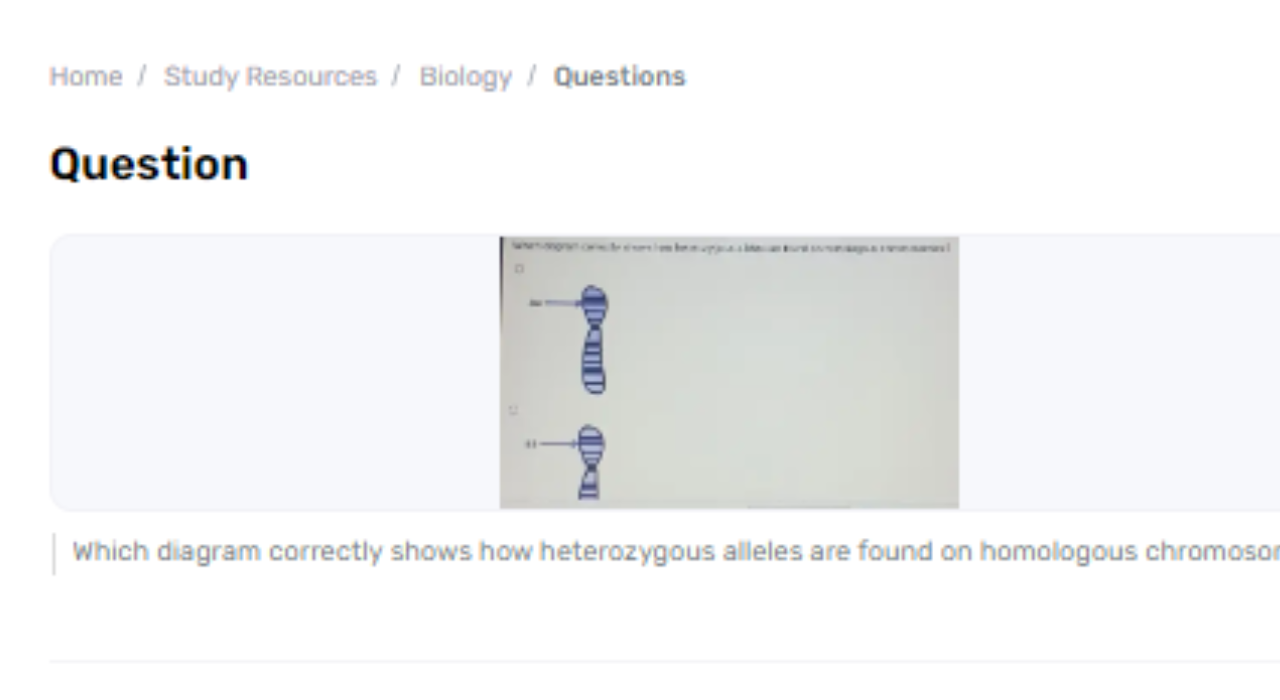Understanding how hereditary characteristics are gotten is crucial to hereditary qualities, and the concept of heterozygous alleles plays a critical parcel. Alleles are varying shapes of quality that incorporate the same position, or locus, on homologous chromosomes. Homologous chromosomes are sets of chromosomes comparable in shape, degree, and intrinsic substance, with one secured from each parent. A heterozygous condition is created when a person has two unmistakable alleles for a particular quality, one on each homologous chromosome. This article will look at the concept of which diagram correctly shows how heterozygous alleles are found on homologous chromosomes? heterozygous alleles, their noteworthiness in the estate, how they are talked to in charts, and how to recognize the right delineation of heterozygous alleles on homologous chromosomes.
Recognizing Heterozygous Alleles on Homologous Chromosomes
Heterozygous alleles are unmistakable alterations of a quality found at the same locus on homologous chromosomes. In a chart, these chromosomes show up as comparative sets, with one chromosome appearing up one allele (e.g., "A") and the other a specific allele (e.g., "a"). Accurately recognizing this arrangement is significant for understanding natural inheritance and variation. Redress charts format the basic natural concept of heterozygosity, critical in ranges like hereditary qualities, pharmaceutical, and developmental science.
Homologous Chromosomes: The Basics
Homologous chromosomes are sets of chromosomes in a diploid life shape, which gathers the living being has two sets of chromosomes one from each parent. Each chromosome interior the facilitate carries the same qualities interior the same coordinate, but the alleles for each quality may alter. This planning is basic within the middle of meiosis, the methodology of cell division that produces gametes (sperm and egg cells). Within the middle of meiosis, homologous chromosomes modify, and the alleles they carry are restricted into varying gametes, which may be a basic perspective of hereditary contrasts and estates.
In a chart of homologous chromosomes, these sets are commonly talked to as two parallel lines or bars. Each line talks to a chromosome, and particular locales along the chromosome are stamped to demonstrate the position of assorted qualities. These positions, or loci, are the same on both chromosomes, in appear to abhor the reality that the alleles at these loci may separate, driving to heterozygosity.
The Concept of Heterozygosity
Heterozygosity refers to the closeness of two arranged alleles at a given quality locus on homologous chromosomes. For the diagram, if one chromosome carries the allele "A" and the other carries the allele "a" at the same locus, the person is heterozygous for that quality. This condition contrasts with homozygosity, where both alleles at a locus are vague, such as "AA" or "aa."
Heterozygosity is fundamental since it contributes to an intrinsic collection inside individuals. This grouping is the establishment for movement and characteristic confirmation, as varying alleles can allow contrasting centers of interest or obstructions in an organism’s environment. In different cases, the closeness of a winning allele (e.g., "A") can cloak the impacts of an inert allele (e.g., "a"), driving the expression of the overpowering characteristic interior of the phenotype.
Steps for Reacting to a Gauth Inquire
1. Clarify the Inquire:
Select in case the address relates to Gauth setup, utilization, organization, or investigation. This makes a qualification in giving a centered reaction.
2. Examine Data:
Check Gauth’s official assets and common client issues to accumulate basic centers of interest for a comprehensive reply.
3. Compose the Reaction:
Organize your reaction in a clear and coherent organize. Guarantee that each step is brief and coordinates answers to the ask.
4. Review and Alter:
Assert the exactness of your information. Refine the reaction for clarity, guaranteeing it is clear and free of inconsequential substance.

Conclusion
After the detailed study on recognizing the correct chart that shows heterozygous alleles on homologous chromosomes it is concluded that The chart is required to depict two chromosomes of the same degree and shape, with contrasting alleles at the same locus. This adjusted representation is central in understanding how genetic characteristics are gotten and how collection is kept up inside populaces. As hereditary qualities may be an establishment of science, acing these concepts is critical for anybody considering the life sciences.


